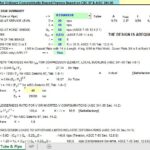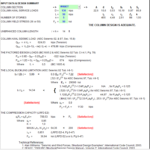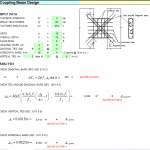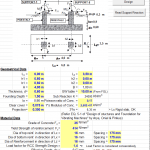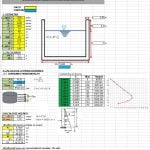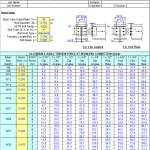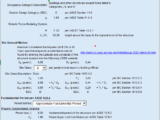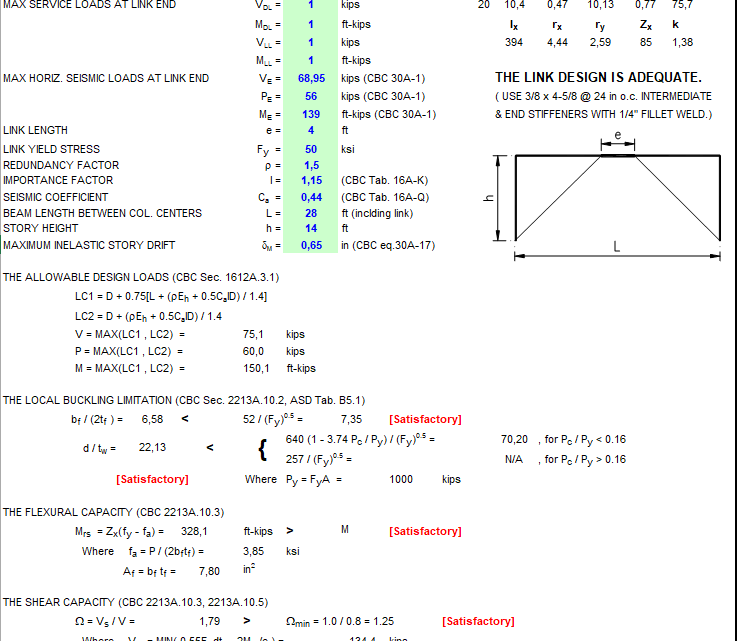
Seismic Design for Ecconcentrically Braced Frames Based on CBC 2001 Spreadsheet
1 November 2024 Off By The Engineering CommunityTable of Contents
Seismic Design for Ecconcentrically Braced Frames Based on CBC 2001 Spreadsheet
Seismic Design for Eccentrically Braced Frames Based on CBC 2001
Eccentrically Braced Frames (EBFs) are essential in seismic design, providing buildings with both stiffness and energy dissipation capacity to withstand earthquakes. The California Building Code (CBC) 2001 offers specific guidelines for the seismic design of EBFs, ensuring structural resilience and safety in earthquake-prone areas.
What Are Eccentrically Braced Frames?
EBFs are steel structures that combine the stiffness of a braced frame with the ductility of a moment frame. The distinguishing feature of an EBF is the eccentric connection between the braces, creating a “link” element that acts as a controlled deformation zone during seismic events. This link absorbs energy, protecting the rest of the structure from excessive stress and damage.
Key CBC 2001 Requirements for EBF Seismic Design
CBC 2001 stipulates detailed requirements to ensure EBFs perform effectively under seismic loads:
- Link Design: According to CBC 2001, the length and capacity of the link in an EBF are critical. Shorter links provide shear-based energy dissipation, while longer links allow for flexural deformation. Engineers must calculate the link’s capacity to ensure it can absorb seismic energy without compromising the frame.
- Ductility Requirements: Ductility is essential for EBFs in high-seismic regions. The CBC 2001 mandates specific detailing and materials to prevent brittle failure in the link. High-ductility steel is often specified to handle inelastic deformation without fracturing.
- Column and Beam Strength: The code emphasizes that columns and beams in EBFs must be stronger than the link to avoid failure in the primary structure. This “capacity design” principle ensures that only the link yields during seismic activity, preserving the overall stability of the frame.
- Bracing Configuration: CBC 2001 requires braces to be designed with the proper orientation and connection to the link. Diagonal or chevron bracing arrangements are common, but the braces must be positioned to optimize load distribution and energy absorption.
Benefits of EBFs in Seismic Zones
Using EBFs per CBC 2001 guidelines offers several benefits:
- Enhanced Energy Dissipation: Links in EBFs absorb seismic energy, reducing damage to other structural components.
- Controlled Deformation: EBFs allow for localized deformation in the link, minimizing the risk of extensive structural damage.
- Improved Stability: By following CBC guidelines for link strength and bracing, EBFs ensure stability, reducing the risk of collapse during strong earthquakes.
The CBC 2001 provides comprehensive guidelines for the seismic design of Eccentrically Braced Frames, focusing on link design, ductility, and structural integrity. When designed in accordance with these standards, EBFs offer an effective solution for protecting structures in seismic regions, balancing strength and flexibility to safeguard lives and property during earthquakes.
More from my site
Seismic Design For Ordinary Concentrically Braces Frames Spreadsheet
Seismic Design for Ecconcentrically Braced Frames Based on IBC & AISC Seismic Spreadsheet
Coupling Beam Design Excel Sheet
Combined Foundation for Pipe Rack Spreadsheet
Cylindrical Water Tank Design Spreadsheet
Prying Action Analysis Excel Sheet

